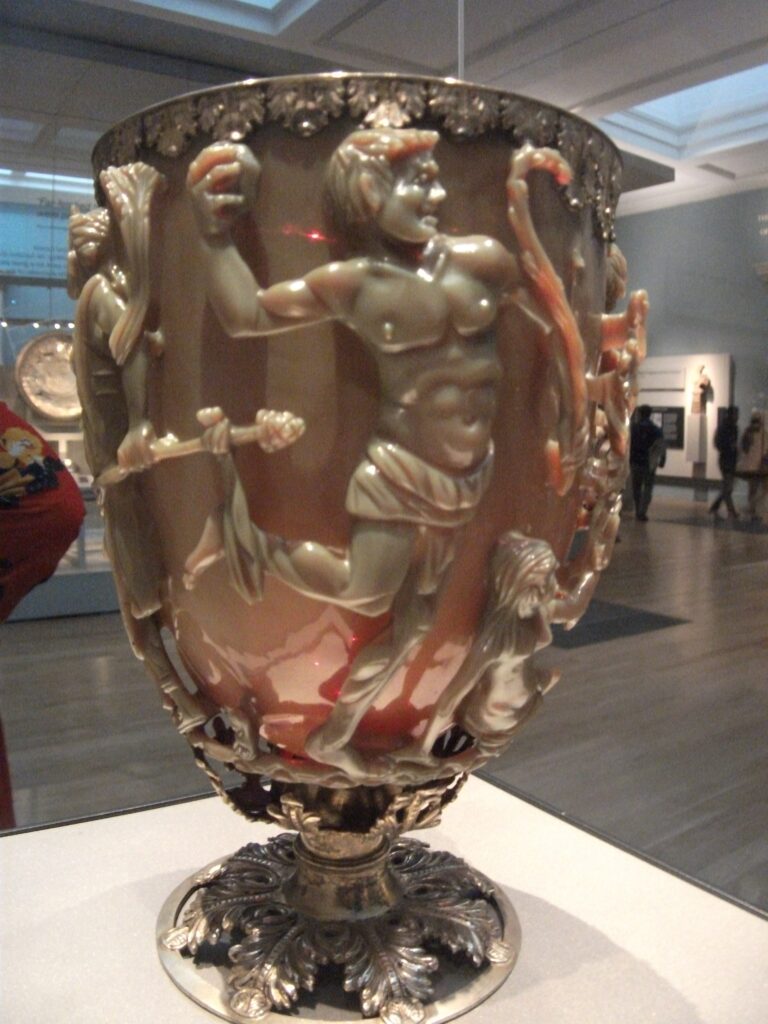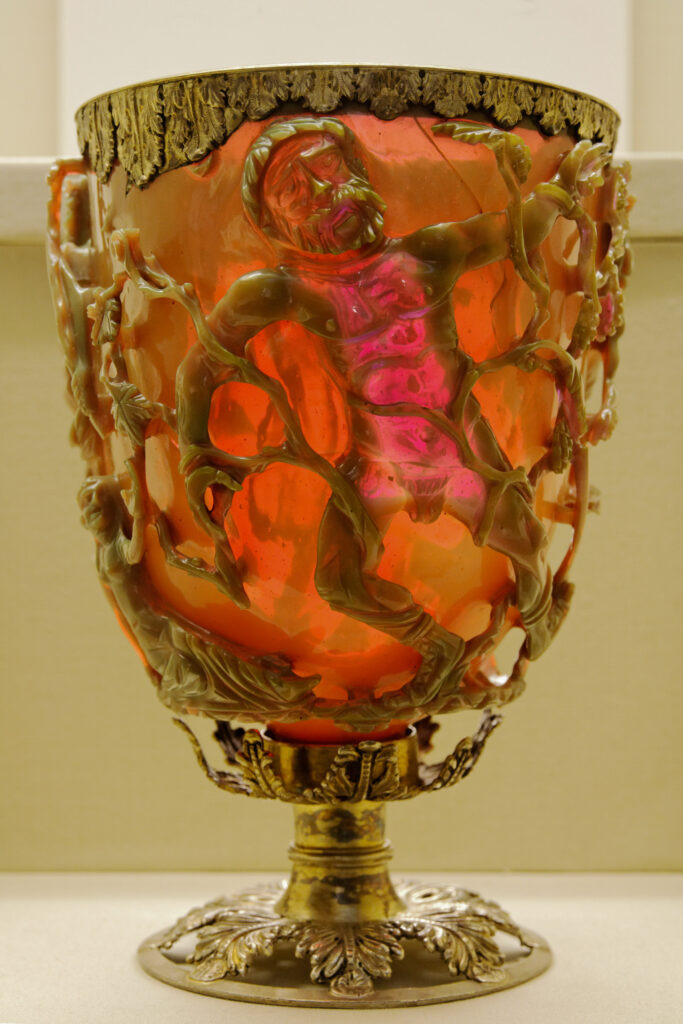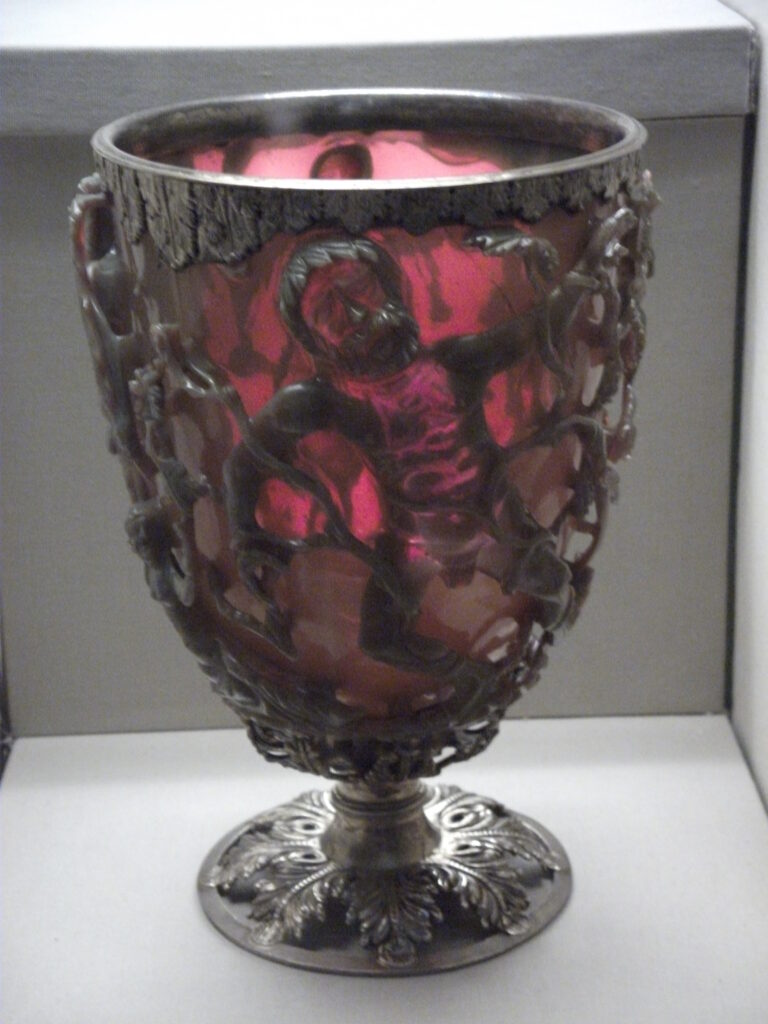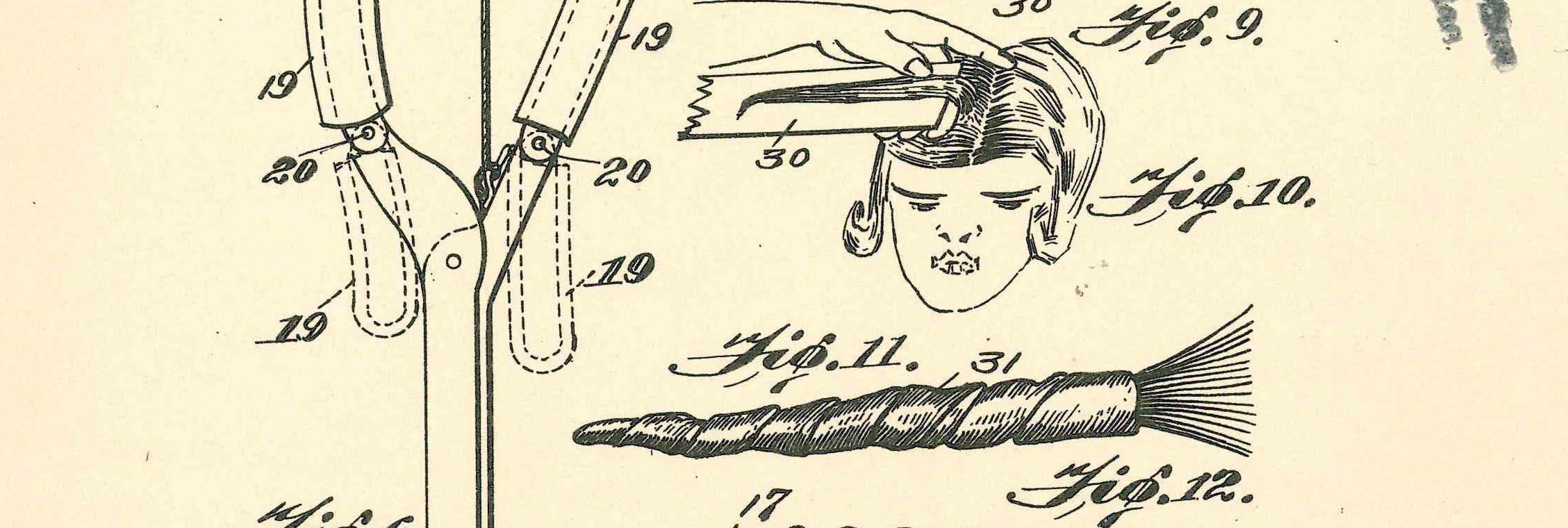The Lycurgus Cup, named after a legendary king of Sparta, is an ancient Roman glass vessel that has captivated art historians, archaeologists, and scientists for centuries. The cup, which is approximately 1,600 years old, is known for its unique color-changing properties. When lit from behind, the cup appears green, but when viewed from the front, it turns red. This remarkable effect has puzzled experts for decades, leading to various hypotheses and scientific investigations to uncover the secret behind its unusual coloration.
The Lycurgus Cup is not only a stunning example of ancient glass-making craftsmanship, but it also holds great cultural and historical value. Its intricate designs depict scenes from Greek mythology, including the story of Lycurgus himself. Understanding the Lycurgus Cup’s manufacturing process and aesthetical significance can teach us much about ancient Roman culture, beliefs, and artistic innovations.

1. Overview of the Lycurgus Cup
The Lycurgus Cup is an ancient Roman glass cup that dates back to the 4th century AD. It is widely regarded as one of the finest examples of Roman craftsmanship due to its unique properties. The cup exhibits dichroism, meaning that it appears differently depending on the angle and quality of light passing through it. This effect is achieved through the inclusion of trace amounts of both gold and silver nanoparticles in the glass, which interact with light in a manner similar to the way light interacts with the surface of a soap bubble. The cup is named after Lycurgus of Thrace, a legendary king who opposed the introduction of wine to his region. The cup features scenes from Greek mythology, including the god Bacchus and the mythical King Lycurgus himself. Its impressive craftsmanship, coupled with its unique optical properties and historical significance, has made the Lycurgus Cup one of the most sought-after treasures of antiquity.
2. Origin of the Lycurgus Cup
The Lycurgus Cup is an ancient glass cup that is considered one of the most remarkable pieces of Roman art. What makes this cup so unique and fascinating is its dichroic properties, which allow the glass to change color when light hits it from different angles. The cup was created during the 4th century AD, during the reign of the Emperor Constantine, and was originally used as a wine goblet. The cup was named after Lycurgus, a legendary king of Thrace, who was known for his cruelty. However, it is not known who originally created the cup, nor is it known who first used it. The origin of the Lycurgus Cup remains a mystery to this day, though it is believed to have been crafted in the Eastern Roman Empire, modern-day Turkey, or Syria, by a skilled glassmaker who would have been highly prized for his talent. Despite its mysterious origin, the Lycurgus Cup remains a testament to the skill and artistry of ancient glassmakers, and a marvel of engineering and design that continues to fascinate historians, archaeologists, and art lovers alike.

3. Unique Properties of the Cup
The Lycurgus Cup is a unique work of art from ancient Rome that possesses several interesting and distinctive properties. One of these properties is the cup’s ability to change color depending on the lighting conditions. When viewed in regular, natural light, the cup appears green. However, when illuminated from behind by a light source, the cup transforms into a glowing red color. This phenomenon is caused by the cup’s thin layers of gold and silver nanoparticles, which interact with light in a way that changes the cup’s perceived color. Additionally, the cup has intricate, detailed glasswork and intricate details etched into its surface, creating a work of art that is both functional and visually stunning. Finally, The Lycurgus Cup is also notable for its historic significance, as it represents the rich artistic heritage of ancient Rome and the incredible technical skill of its craftsmen.
4. Historical Significance of the Cup
The Lycurgus Cup is an artifact of immense historical significance. This small, ancient Roman cup is made of dichroic glass and changes color depending on the direction and type of light that passes through it. The cup dates back to the 4th century A.D. and is named after the mythical king Lycurgus who was punished by the gods for his disrespect for the vine, as the cup depicts scenes of his punishment. Beyond its functional significance as a drinking vessel, it is revered for its artistic mastery and its use of innovative ancient glassmaking techniques. The cup is also significant for its ability to provide insight into the cultural, social, and political events of ancient Rome and the eastern Mediterranean in the 4th century AD, bridging a critical period of transition that began with the fall of the Western Roman Empire. The cup has been hailed as a masterpiece of ancient art and a symbol of the pinnacle of ancient glassmaking techniques, making it a priceless artifact of immeasurable historical and cultural significance.
5. Notable Appearances of the Cup
The Lycurgus Cup is a highly valued artifact in the world of ancient art and is famous not only for its beauty but also for its unique properties. The cup was created by ancient Roman craftsmen in the 4th century CE, and features intricate scenes of Greek mythology. It is made from dichroic glass, which means it appears to change color when held against different backgrounds or viewed under different lighting conditions. Over the centuries, the Cup has been possessed and treasured by many notable individuals and institutions. However, there are 5 appearances of the cup that are particularly noteworthy due to their historical significance and rarity. These appearances range from its discovery in the 19th century to its current location in the British Museum, where it remains a source of wonder and fascination.

6. Conservation Efforts
Conservation efforts have been a significant focus in preserving the Lycurgus Cup. The cup’s unique optical properties have made it a subject of intense scientific study, leading to a better understanding of ancient Roman glassmaking techniques. In recent years, conservation efforts have been aimed at ensuring the cup’s longevity and preventing further damage. The cup is displayed in a specially designed showcase, which helps to regulate the light exposure and temperature to minimize any potential deterioration. Additionally, experts in the field of conservation have been involved in studying and analyzing the cup, providing recommendations for its care and handling. By maintaining the integrity of the cup through careful conservation efforts, it can continue to serve as a remarkable artifact for visitors to appreciate and learn from for years to come.
7. Replication Attempts
The Lycurgus Cup is an extraordinary artifact from the 4th century that has intrigued scientists and art lovers alike. While its impressive aesthetics and unusual optical properties have been widely documented, replication attempts have provided additional insights into the craftsmanship and ingenuity of this ancient Roman artifact. Several attempts have been made to recreate the cup’s color-changing effect, which is achieved through the manipulation of silver and gold nanoparticles. These attempts have shed light on the complexity and precision of the artisanal process involved in creating the original cup, and have highlighted the unique properties of the materials used. Replication attempts have also allowed for a deeper understanding of the cultural and scientific context in which the Lycurgus Cup was created, and the ingenuity of ancient Roman artisans in harnessing the properties of everyday materials for artistic and technological innovation.
8. Influence of the Cup
The Lycurgus Cup is a remarkable example of ancient Roman glasswork that dates back to the 4th century AD. It is widely regarded as one of the most awe-inspiring and sophisticated artifacts of its kind, with a unique optical quirk that has fascinated scholars and laypeople alike for centuries. This curious characteristic, known as the “Influence of the Cup,” occurs because of the cup’s color-changing properties. When the cup is backlit by natural or artificial light, its hue shifts from green to red. This phenomenon is due to the nano-level particles of gold and silver that were used in the glassblowing process, altering the way light passes through the cup. This unique characteristic made the Lycurgus Cup a popular object of fascination and study for scholars, art enthusiasts, and historians, and it continues to inspire and captivate people to this day.
9. Current Location
The Lycurgus Cup is a rare and valuable artifact from ancient Rome that is celebrated for its unique technological and artistic features. Among the many distinctive characteristics of the cup, one stands out for its significance in the field of materials science: the ability to change color depending on the viewer’s position relative to the light source. This remarkable optical effect is achieved through a sophisticated technique of controlled nanoscale composition, which creates thin layers of gold and silver particles embedded in the glass matrix. The accurate detection and measurement of such a delicate structure requires advanced analytical methods and techniques, including advanced imaging and spectroscopic tools. In this context, the ability to accurately determine the current location of the cup, and its orientation and lighting conditions, is crucial for obtaining reliable and reproducible measurements of its optical properties. The use of geospatial information systems and other forms of position tracking technologies can provide accurate and up-to-date information on the cup’s location and environment, ensuring the validity and relevance of scientific investigations into this fascinating ancient artifact.
10. Future Projects Involving the Cup
The Lycurgus Cup is a masterpiece of ancient Roman glasswork, famous for its dichroic properties that give it the ability to change color when viewed under different lighting conditions. Its unique properties have fascinated scientists and art historians for centuries and have prompted research into its composition and production techniques. As technology advances, there are several future projects involving the Cup that seek to unlock its secrets and discover new information about this remarkable work of art. These projects include using advanced imaging techniques to study the Cup’s crystal structure, investigating how it was made and the technology behind its color-shifting properties, and exploring how the Cup was used and displayed in ancient times. Through these projects, we hope to gain a greater understanding of the Cup and its significance to the fields of art and science.
The Lycurgus Cup is truly a remarkable artifact that embodies the beauty and mystery of ancient Roman art and culture. It’s astounding to consider the intricate techniques and knowledge that went into creating such a unique object. The cup serves as a testament to the skill and creativity of Roman artisans and the enduring legacy of their craftsmanship. As we continue to uncover more relics and artifacts from the ancient world, we are reminded of the remarkable achievements of societies that precede us, and the Lycurgus Cup is a magnificent example of this.


